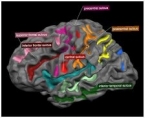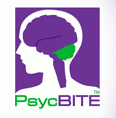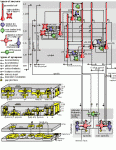Mar 14, 2006
NADA - Networked Performance

NADA affords both the technical novice and expert an unified platform for prototyping physical interfaces and digital content - from handheld product concepts to reactive environments that can be connected across the Internet.
Working models that require less work... NADA is designed for maximum versatility and efficiency. It is a true cross-platform application, and it connects to a variety of commercially available hardware for bringing digital information into and out of standard PC's and Macs. Supported hardware is automatically detected and auto-configured, minimizing complexity for the user. Project authoring with NADA can be done in either Macromedia Flash MX2004 (or later) or Java. Even beginners without programming experience can design and prototype with sensors, actuators, lights, switches and animation using an intuitive graphical environment. Graduate to finer levels of control by developing projects using the NADA API for ActionScript and Java. Below is the look of the NADA interface
20:35 Posted in Research tools | Permalink | Comments (0) | Tags: Positive Technology
Mar 10, 2006
Collaborative Digital Brain Mapping
Via CogNews

BrainMaps.org is an interactive high-resolution digital brain atlas consisting of several dozen mouse, monkey, and human brains. The atlas is integrated with a high-speed Internet database for querying and retrieving data about brain structure and function online. Users can add their own labels and comments, and place landmarks throughout the digital brains they navigate; images, landmarks, and other annotations can be shared with other users in the BrainMaps forum
17:47 Posted in Research tools | Permalink | Comments (0) | Tags: Positive Technology
Feb 28, 2006
Mind & Brain portal on Wikipedia
Via Mind Hacks
A mind and brain portal and a psychology portal have been recently included in Wikipedia. The aim of these online tools is to provide the psychology and neuroscience community with latest encyclopaedic contents, and to deliver news/messages related to these disciplines.
17:35 Posted in Research tools | Permalink | Comments (0) | Tags: Positive Technology
Feb 27, 2006
BrainTutor
Via Mind Hacks
BrainTutor is a software package which allows users to visualize, rotate and even "slice through" a brain scan in 2D and 3D. It is also possible to get the label of particular brain areas by clicking on them. The package is free and runs onLinux, Mac OSX and Windows

14:05 Posted in Research tools | Permalink | Comments (0) | Tags: Positive Technology
Feb 21, 2006
PsycBITE
 PsycBITE is available online free of charge
PsycBITE is available online free of charge15:34 Posted in Research tools | Permalink | Comments (0) | Tags: Positive Technology
Feb 10, 2006
Beyond reading thoughts
In an article recently appeared on the Observer, biologist Steven Rose argues the risk of a new era of mind control.
Concern about rising levels of mental distress have resulted in unprecedented levels of funding in the US and Europe. And a range of new technologies, from genetics to brain imaging, are offering extraordinary insights into the molecular and cellular processes underlying how we see, how we remember, why we become emotional.
Brain imaging has become familiar. Scanners, known by their initials - CAT, PET, MRI - began as clinical tools, enabling surgeons to identify potential tumours, the damage following a stroke or the diagnostic signs of incipient dementia. But neuroscientists quickly seized on their wider potential. The images of regions of the brain 'lighting up' when a person is thinking of their lover, imagining travelling from home to the shops, or solving a mathematical problem, have captured the imagination of researchers and public alike. What if they could do more?
Read full article
20:49 Posted in Research tools | Permalink | Comments (0) | Tags: Positive Technology
Feb 02, 2006
Quantitative analysis of accuracy of an inertial/acoustic 6DOF tracking system in motion
Quantitative analysis of accuracy of an inertial/acoustic 6DOF tracking system in motion.
J Neurosci Methods. 2006 Jan 28;
Authors: Gilson SJ, Fitzgibbon AW, Glennerster A
An increasing number of neuroscience experiments are using virtual reality to provide a more immersive and less artificial experimental environment. This is particularly useful to navigation and three-dimensional scene perception experiments. Such experiments require accurate real-time tracking of the observer's head in order to render the virtual scene. Here, we present data on the accuracy of a commonly used six degrees of freedom tracker (Intersense IS900) when it is moved in ways typical of virtual reality applications. We compared the reported location of the tracker with its location computed by an optical tracking method. When the tracker was stationary, the root mean square error in spatial accuracy was 0.64mm. However, we found that errors increased over ten-fold (up to 17mm) when the tracker moved at speeds common in virtual reality applications. We demonstrate that the errors we report here are predominantly due to inaccuracies of the IS900 system rather than the optical tracking against which it was compared.
22:50 Posted in Research tools | Permalink | Comments (0) | Tags: Positive Technology
Jan 18, 2006
Neuroscience lectures in video
Via Mind Hacks
In this online directory created by Michael Kilgard are listed videos of leading mind and brain researchers giving lectures on their areas of interest. The speakers include researchers such Steven Pinker, Endel Tulving and Michael Posner.
18:58 Posted in Research tools | Permalink | Comments (0) | Tags: Positive Technology
Jan 11, 2006
CiteULike
Thanks to Pierre Lindenbaum, I discovered a free service similar to Connotea called CiteULike.
As noted by Pierre, both services offer advantages: for example, citeulike allows to store a personnal PDF copy of an article, while connotea can handle geospatial tags.
However, while Connotea is hosted by Nature Publishing Group, CiteULike is based on academic funds.
10:18 Posted in Research tools | Permalink | Comments (0) | Tags: Positive Technology
Jan 09, 2006
Connotea
Connotea is a free online reference management service for scientists. It allows storing reference list online, making them accessible from every pc, and sharing them with colleagues. Researchers with similar scientific interests can be discovered by connecting to the collections of those with similar interests

20:15 Posted in Research tools | Permalink | Comments (0) | Tags: Positive Technology, research tools
Interdisciplines
Interdisciplines is a website for research in the social sciences, merging contributions from different fields in the humanities. One interesting feature of this site is that it allows to organize virtual conferences. The current conference is on Causality
Past conferences include very interesting topics, as mirror neurons, art and cognition, language and evolution.
20:10 Posted in Research tools | Permalink | Comments (0) | Tags: Positive Technology, research tools
Jan 04, 2006
Hubmed
Hubmed is an alternative interface to the PubMed medical literature database, with some powerful features, which include:
- Daily updates of search results via web feeds.
- Quick access to searches with a Firefox search plugin or a HubMed bookmarklet (drag to your browser's bookmarks toolbar).
- Export citations in RIS, BibTeX, RDF and MODS formats, or directly to RefWorks.
- Unzip HubMed's import filter into Endnote's Filters folder for direct import into Endnote, or install the RIS Export plugin for direct import into ProCite, RefMan and older versions of Endnote.- Use the Citation Finder to convert reference lists from PDFs into search results.
- Create lists of closely related papers using Rank Relations, then visualise and browse clusters of related papers using TouchGraph (requires Java).
- Graph occurrences of keywords in published papers over time
I have tested the service and it is really useful. The user interface is essential and very easy to use; I think it is a great way for keeping up with medical literature
16:05 Posted in Research tools | Permalink | Comments (0) | Tags: Positive Technology, research tools
Dec 23, 2005
Science shows streaming video presentation on this year's main breakthrough
Science mag offers a streaming video presentation on this year's main breakthrough - it's amazing, don't miss it!
13:40 Posted in Research tools | Permalink | Comments (0) | Tags: Positive Technology, research tools
Dec 06, 2005
Simulating the size of the entire human brain
Via Neurodudes
From Eugene Izhikevich’s website
On October 27, 2005 I finished simulation of a model that has the size of the human brain. The model has 100,000,000,000 neurons (hundred billion or 10^11) and almost 1,000,000,000,000,000 (one quadrillion or 10^15)  synapses. It represents 300×300 mm^2 of mammalian thalamo-cortical surface, specific, non-specific, and reticular thalamic nuclei, and spiking neurons with firing properties corresponding to those recorded in the mammalian brain. The model exhibited alpha and gamma rhythms, moving clusters of neurons in up- and down-states, and other interesting phenomena (watch a 25M .avi or .mov movie). One second of simulation took 50 days on a beowulf cluster of 27 processors (3GHz each). Why did I do that?...
synapses. It represents 300×300 mm^2 of mammalian thalamo-cortical surface, specific, non-specific, and reticular thalamic nuclei, and spiking neurons with firing properties corresponding to those recorded in the mammalian brain. The model exhibited alpha and gamma rhythms, moving clusters of neurons in up- and down-states, and other interesting phenomena (watch a 25M .avi or .mov movie). One second of simulation took 50 days on a beowulf cluster of 27 processors (3GHz each). Why did I do that?...
21:30 Posted in Research tools | Permalink | Comments (0) | Tags: Positive Technology, research tools
Nov 30, 2005
BrainML project
One such extension is provided by the new NIH-supported neuroinformatics initiative of the Society for Neuroscience, which supports the development of expert-derived terminology sets for several areas of neuroscience. Under a cooperative agreement, these term lists will be made available Open Source.
This site provides a complete description of BrainML, and it also serves as a public repository of BrainML models.
23:30 Posted in Research tools | Permalink | Comments (0) | Tags: Positive Technology, research tools
Oct 26, 2005
Deliver PubMed search results with an RSS feed

To add PubMed searches to your collection of RSS feeds, just follow these steps:
| (1) Run your search in PubMed. | |
| (2) Select RSS Feed from the Send to menu. | |
| (3) Click Create Feed and copy the XML icon into your RSS Reader. |
18:30 Posted in Research tools | Permalink | Comments (0) | Tags: Positive Technology, research tools
Oct 19, 2005
Knowledge management software for neuroscientists
Via Neurodudes
Neuroscholar is a KM software application for neuroscientists, which allows to store and annotate primary research data in conjunction with information from the literature (below a preview of the program's graphical user interface).

More to explore
The Neuroscholar demo can be accessed here.
The Neuroscholar source code can be downloaded from here.
Burns, G. A. (2001). Knowledge management of the neuroscientific literature: the data model and underlying strategy of the NeuroScholar system. Philos Trans R Soc Lond B Biol Sci 356(1412): 1187-208.
Burns, G., K. Stephan, B. Ludäscher, A. Gupta and R. Kötter (2001). Towards a federated neuroscientific knowledge management system using brain atlases. Neurocomputing 38-40: 1633-1641.
15:20 Posted in Research tools | Permalink | Comments (0) | Tags: Positive Technology, research tools
Oct 11, 2005
The Whole Brain Atlas
The Whole Brain Atlas has been awarded the Scientific American Science and Technology Web Awards 2005
The site is an information resource for central nervous system imaging which integrates clinical information with magnetic resonance (MR), x-ray computed tomography (CT), and nuclear medicine images.  The site presents high-resolution images of various types of strokes, tumors, degenerative disorders and infectious diseases as they affect the brain over time.
The site presents high-resolution images of various types of strokes, tumors, degenerative disorders and infectious diseases as they affect the brain over time.
Another award has gone to Mind Hacks, a blog that reports on the latest developments in neuroscience, taking a fun approach to dissemination.
17:25 Posted in Research tools | Permalink | Comments (0) | Tags: Positive Technology, research tools
Sep 24, 2005
Open-Source Context-Aware Experience Sampling Tool
Ambient Intelligence (AmI) systems can be viewed as environments in which people will increasingly live their lives. Ubiquitous AmI technologies and systems like personal digital assistants, wearable sensors, mobile phones challenge traditional usability evaluation methods, because use context can be difficult to recreate in a laboratory setting. This view suggests that the evaluation of user’s experience with AmI systems should take place in realistic contexts, such the workplace, the home, etc. Another issue has to do with the content of the evaluation. Performance-based approaches are not suitable for AmI systems, because it is difficult to specify tasks that capture the complexity of real world activities. Moreover, experience is idiosyncratic, in that it is related to the specific bio-cultural configuration of each individual, and it can undergo changes throughout individual life and daily situations.
 The Experience Sampling Method (ESM) offers a new perspective in the analysis of these issues. ESM is based on the online repeated assessment of individual behavior and experience in the daily context. Participants describe themselves and their environment while interacting with it. They carry with them for one week an electronic beeper and a booklet of self-report forms. Whenever they receive an acoustic signal, they are expected to fill out a form. The form contains open-ended questions about situational variables such as place, activities carried out, social context, and subjective variables such as the content of thought, perceived goals, and physical conditions. The form also contains 0-12 Likert-type scales investigating the quality of experience in its various components: affect, motivation, activation, and cognitive efficiency.
The Experience Sampling Method (ESM) offers a new perspective in the analysis of these issues. ESM is based on the online repeated assessment of individual behavior and experience in the daily context. Participants describe themselves and their environment while interacting with it. They carry with them for one week an electronic beeper and a booklet of self-report forms. Whenever they receive an acoustic signal, they are expected to fill out a form. The form contains open-ended questions about situational variables such as place, activities carried out, social context, and subjective variables such as the content of thought, perceived goals, and physical conditions. The form also contains 0-12 Likert-type scales investigating the quality of experience in its various components: affect, motivation, activation, and cognitive efficiency.
Intille and colleagues at MIT have recently developed a Personal Digital Assistant-based version of the ESM which can be used for user-interface development and assessment of ubiquitous computing applications. This approach, called Context-Aware Experience Sampling, includes the possibility to assess user’s experience not only through the standard time-based protocol, but also according to the participant’s location, by means of information provided by a GPS plug-in. Thus, researchers can design experiments collecting self-reports only when the participant is near a location of interest. Moreover, users can answers via audio recording or by taking a picture with a camera.
More to explore
S. S. Intille, J. Rondoni, C. Kukla, I. Ancona, L. Bao, A context-aware experience sampling tool, CHI Extended Abstracts 2003, 972-973.
Gaggioli, A., Optimal Experience in Ambient Intelligence (2005), in Ambient Intelligence, Riva, G., Vatalaro, F., Davide, F., Alcañiz, M. (Eds.), Amsterdam: IOS Press. PDF
10:00 Posted in Research tools | Permalink | Comments (0) | Tags: Positive Technology, research tools
Sep 07, 2005
The Blue Brain Project
The “Blue Brain” project, a collaboration between IBM and the Ecole Polytechnique Fédérale de Lausanne (EPFL), aims to create the first computer simulation of the circuitry in the neocortex, which is the largest and most complex part of the human brain, down to the molecular level. 
For the project, IBM will use the latest installation of IBM's BlueGene/L system running on Linux. EPFL's supercomputer uses 8.000 CPUs and has a peak speed of 22.8 teraflops (22.8 trillion calculations every second) putting it among the the world's top 15 supercomputers. The simulation code will be based on NeoCortical Simulator, an open source software running on Linux developed by Dr. Philip Goodman's.
Using the digital model generated by Blue Brain, scientists hope to shed light on complex cognitive processes such as thought, perception and memory, and to understand more about mechanisms responsible of brain malfunction.
More to explore
IBM Research Blue Gene Project Page
10:55 Posted in Research tools | Permalink | Comments (0) | Tags: Positive Technology, research tools






